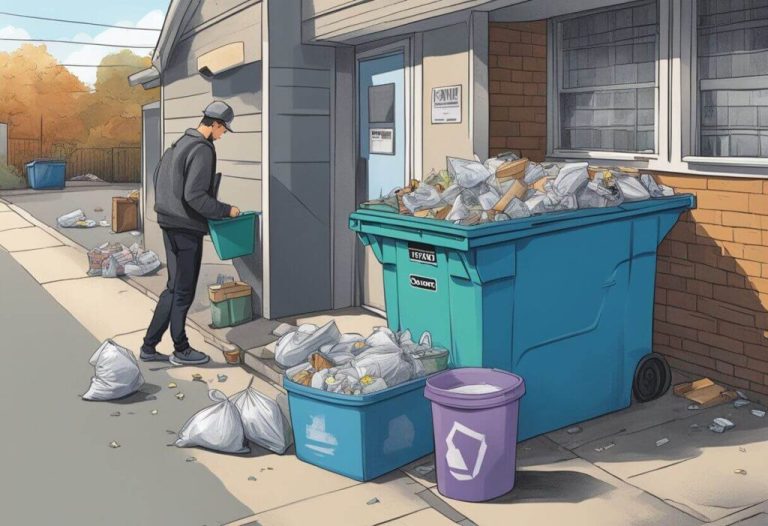The proposed new Royals stadium located in downtown Kansas City would end up costing Jackson County taxpayers significantly more than the initial $1 billion estimate.
According to suggestions made by the Royals, the stadium sales tax and other payments required by the current lease agreement, extending 40 years beyond its expiration date in 2031, would raise the estimated cost to a range of $4.4 billion to $6.4 billion. This information was reported by Kansas City Star.
A recent financial analysis, which was conducted confidentially by Jackson County Executive Frank White’s office and obtained by The Star, reveals some interesting findings.
Former Kansas City Royals second baseman, Frank White, who was awarded eight Gold Glove Awards, chose not to comment on a document related to taxpayer dollars for stadium upgrades. However, he has been vocal about his concern regarding obligating county taxpayers to enter into expensive long-term leases with the Royals and the Chiefs. Both teams have been seeking taxpayer funds for stadium upgrades.
During a recent interview with a Fox4 reporter at the county courthouse, he acknowledged the long-standing lease agreement and expressed his desire to become a more equitable partner. He stated that the current lease agreement is not advantageous to the county and that they are looking to address some pressing issues that need to be addressed.
According to The Star, the document obtained is not considered an open record by White’s administration. This is due to the fact that it pertains to pending legal matters, specifically lease negotiations, which are exempt from the state’s open records law.
According to a reporter’s source, who received a copy from a member of the Legislature, there is concern that the potential financial burden of the Royals leaving Kauffman Stadium for a new home in Kansas City’s East Village area could fall on county taxpayers. The source felt that the public should be aware of this situation.
The Royals are currently exploring an alternative site in North Kansas City as well. However, the analysis provided does not delve into the potential impact this decision may have on Jackson County finances, since North Kansas City falls under the jurisdiction of Clay County.
Inflation built in
When financing a purchase over time, like a car or a house, it’s important to consider the impact of interest payments and inflation. This means that the final amount paid back will be higher than the original amount borrowed. County Administrator Troy Schulte provided legislators with projections on a spreadsheet that took these factors into account.
According to the proposed scenario, the spreadsheet illustrates the extension of the current ⅜-cent sales tax that supports the recent renovations at Kauffman and Arrowhead stadiums for 40 years. It is noteworthy that this tax not only pays for the maintenance of the venues but also provides the Royals and Chiefs with millions of dollars annually to ensure their proper upkeep.
According to the projections, tax receipts are expected to increase gradually, enabling the retirement of stadium debt and the ongoing provision of operating subsidies to the teams.
The main focus of the spreadsheet is on the advantages that would benefit the Royals, rather than the Chiefs. As of now, the Chiefs have not disclosed their intentions following the expiration of their current lease.
According to the assumptions made, the Royals would still be entitled to their half of the sales tax, in addition to receiving half of the proceeds from a park property tax levy that supports the sports complex. Moreover, they would continue to receive their share of the yearly cash payments that both the Chiefs and Royals receive indirectly from the state of Missouri and Kansas City.
According to a memo from Schulte to the county legislators, the current total revenue from these sources for both teams stands at $53.4 million per year.
Privately suggesting to the county’s negotiators, the Royals propose an exponential growth in the figure by extending the leases until 2071.
According to Schulte, the Royals could potentially receive a staggering sum of between $1.3 billion and $2 billion from sales tax receipts alone over the course of 40 years.
According to the spreadsheet, the county’s projection for the growth of tax revenues is 1% per year on average, resulting in a lower figure. Meanwhile, the Royals estimate a higher growth rate of 2.5%.
Another $170 million could also greatly benefit the team, which would come from its share of the county parks levy as well as payments from the city and state.
Insurance Costs
Schulte was taken aback when he learned about the staggering $2.9 billion that the county would have to shell out in order to cover the increased insurance payments for the downtown ballpark over a span of four decades.
Schulte expressed concern over the significant costs of property insurance in a recent statement. According to him, the current costs, although already high, are below market value and will need to be adjusted to actual value once the new stadium is opened. These staggering expenses are a cause for worry and must be taken into account when planning for the new facility.
According to a spreadsheet, the county currently allocates $800,000 annually towards insuring the two stadiums. However, Schulte’s memo suggests that the actual figure is closer to $1.5 million per year. The memo also highlights that property insurance alone for a new ballpark in 2028 would amount to $4.5 million annually, according to the county’s insurance broker. Schulte notes that these costs would increase by 10% each year due to rising rates and construction expenses.
The Royals have chosen to stay silent on the projections, without providing any comment. A few lawmakers have not responded to requests for their opinion on the matter, including DaRon McGee, who holds a significant position in the legislature, and Manny Abarca, who chairs the budget committee.
When questioned about Schulte’s memo and spreadsheet, Sixth District Legislator Sean Smith – one of two Republicans on the Democrat-led body – replied via text message.
While he had his reservations regarding certain assumptions in the projections, he also raised a valid point about the heavy financial burden that the county taxpayers would have to bear for the construction of a new stadium.
According to Smith, the inflationary figures seem to be too high and he believes that even insurance does not increase by 10% annually.
The Royals are requesting more funds than what the Jackson County Taxpayers can realistically afford. In my opinion, Kauffman Stadium is still a remarkable venue and I have yet to see any compelling evidence that justifies its decommissioning.
According to the statement, if the Royals are seeking more than a billion dollars in taxpayer funding, they should look beyond their current tax base to secure the necessary funds. Additionally, the statement suggests that if the Royals have a specific amount in mind, they should present the figure to elected officials and voters, who can then determine how the funding will be acquired.
The Royals have given the county a glimpse of their organizational aspirations.
During a special Tuesday afternoon meeting, the county Legislature passed a resolution stating that the Royals team has presented the county with a “reply offer term sheet.” This sheet outlines the terms and conditions by which the Royals would finance and develop a new baseball stadium in the East Village.
The details of the term sheet have not been disclosed to the public yet. The Legislature has requested White to share his recommendations with them regarding the county’s response, and he has been given a deadline of 48 hours to do so.
According to reports, White is currently leading the negotiations with the Royals. While he is not obligated to meet the deadline set for late Thursday afternoon, he has expressed his commitment to providing a response by the end of the business day.
Read More:
- Woman killed in weekend gunshot on Main Street in Kansas City
- Freezing cold temperatures will arrive in the Kansas City area. Could certain areas experience snowflakes?



